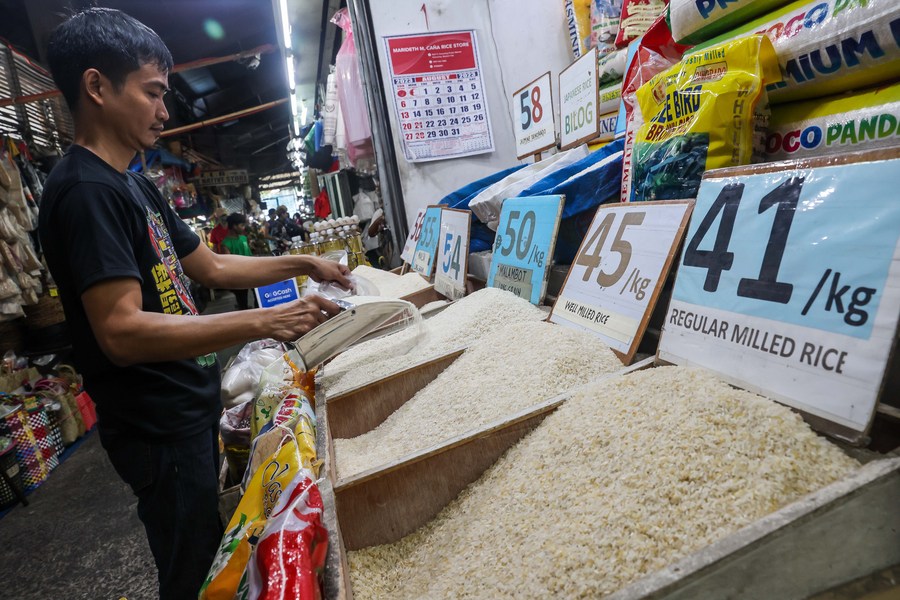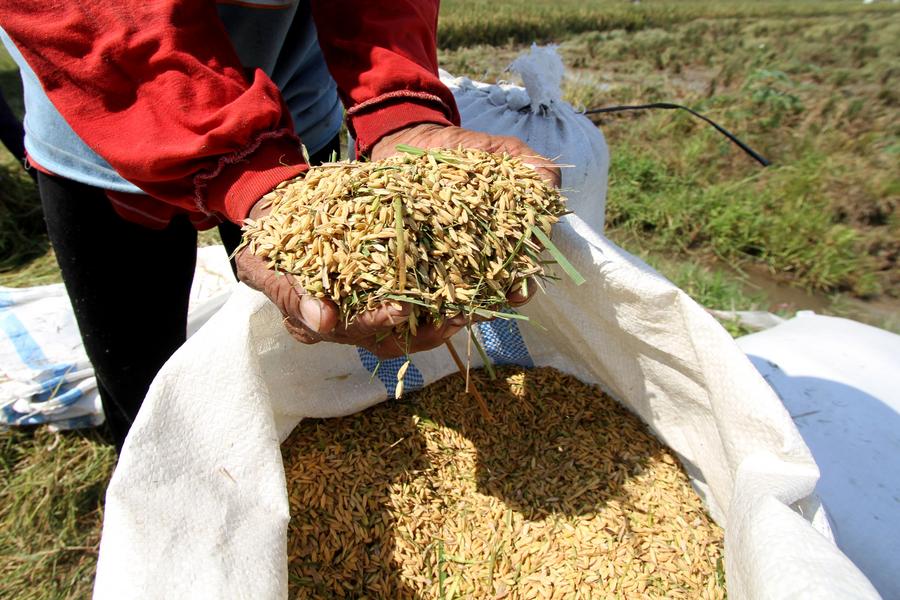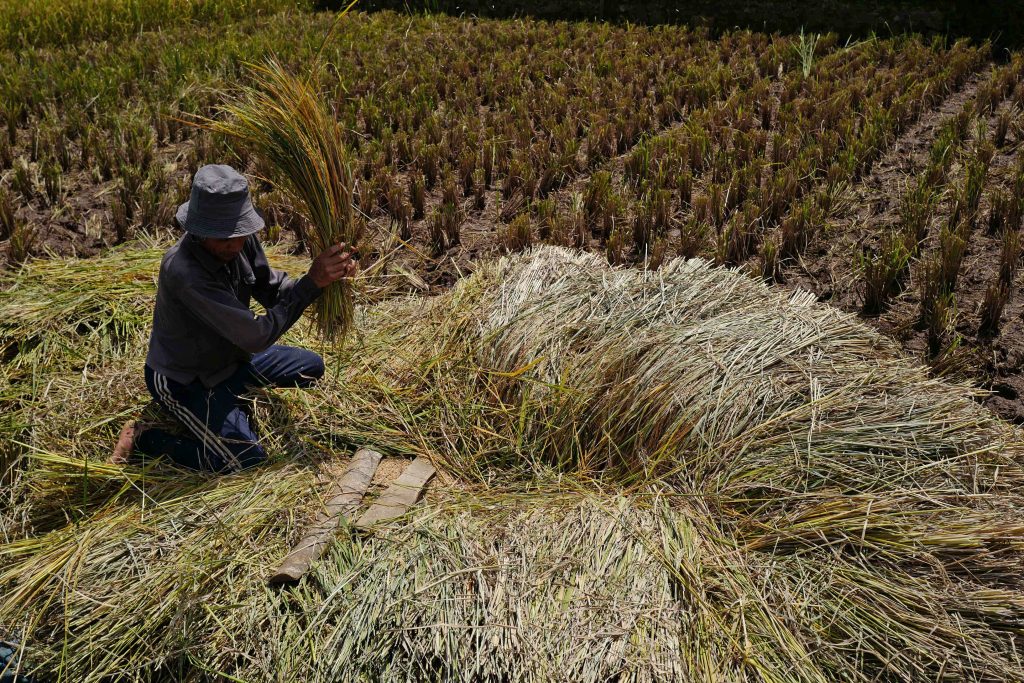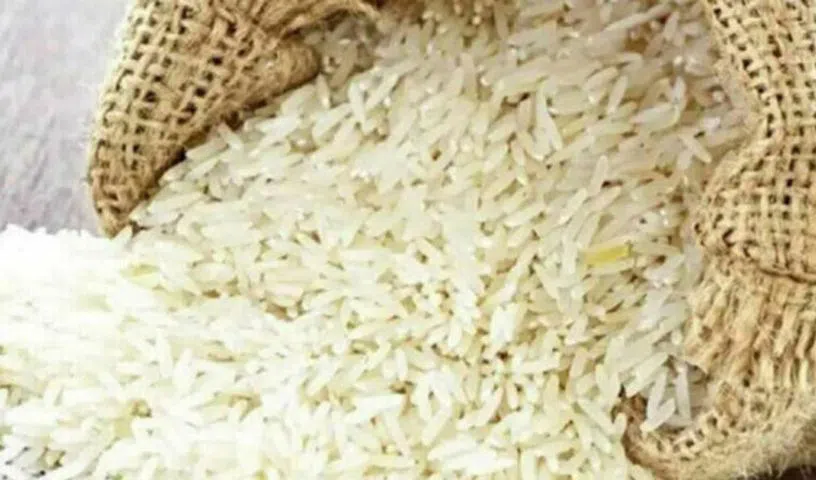Tags
Philippines struggling to tame soaring rice prices

A vendor sells rice at a market in Quezon City, the Philippines on Sept. 6, 2023. (Xinhua/Rouelle Umali)
A price ceiling on rice was imposed by Philippine President Ferdinand Romualdez Marcos to crack down on hoarders and smugglers and tackle the challenges posed by escalating food costs.
MANILA, Sept. 6 (Xinhua) — Rice is essential on Filipino dining tables, serving as the canvas for countless culinary creations and traditions. However, the recent surge in rice prices has been nothing short of a crisis for the Southeast Asian country.
Cris Espiritusanto, a Filipino housewife with four children living in Laguna province, is feeling the pinch of spiraling rice prices. “We can not afford rice priced at more than 50 pesos (0.88 U.S. dollars) a kilo,” she told Xinhua.
In the Philippines, the price of rice has sharply increased over the past weeks, rice inflation increased to 8.7 percent in August from 4.2 percent in July.

A vendor sells rice at a market in Quezon City, the Philippines on Sept. 6, 2023. (Xinhua/Rouelle Umali)
Some officials blamed the skyrocketing rise on hoarders who create an artificial shortage and speculative business in the market.
“This implies that some are manipulating the expected impact of the El Nino dry spell to depict a shortage at this time,” National Economic and Development Authority Secretary Arsenio Balisacan told reporters.
The cabinet’s economy official also attributed the rise to the expected reduction in rice production due to El Nino and an export ban recently imposed by major exporters which led to higher international rice prices.
“We are facing difficult times,” Balisacan said, calling the El Nino phenomenon “a major disruptor” to the agriculture sector, particularly rice production.

A vendor sells rice at a market in Quezon City, the Philippines on Sept. 6, 2023. (Xinhua/Rouelle Umali)
As Filipinos grapple with the challenges posed by escalating food costs, the government decided to crack down on hoarders and smugglers.
A price ceiling on rice, imposed by Philippine President Ferdinand Romualdez Marcos, entered into force on Tuesday at 41 pesos (0.72 dollars) a kilo for regular milled rice and 45 pesos (0.79 dollars) for well-milled rice.
“Based on our studies, the only reason for the rising rice prices are smugglers and hoarders,” Marcos said, ordering his administration to be vigilant and sustain warehouse raids on suspected hoarders and smugglers.
The Department of Agriculture, the Department of Trade and Industry, and local government units were also instructed to visit wet markets and supermarkets to ensure compliance with the price cap.

A vendor sells rice at a market in Quezon City, the Philippines on Sept. 6, 2023. (Xinhua/Rouelle Umali)
However, the rice price cap policy raised concerns and dismay among small retailers who agree that lower rice prices ease the burden of the consuming public, but their business will be negatively affected as they bought grain at higher prices.
“It would be unfair to force businessmen to reduce their prices without considering the current stock prices,” Laguna’s rice store owner Reigno Azarcon told Xinhua.
Azarcon urged the government to protect small business owners, arguing that small retailers have little control over farmgate prices, while rice importers and syndicates remain untouched by the new policy.
On Tuesday, many rice retailers like Azarcon shut down their stores, defying the rice policy which reminded many Filipinos of Marcos’ unfulfilled campaign promise to lower the price of rice to 20 pesos (0.35 dollars) per kilo, half of the current rice cap.
Marcos stressed that the imposition of a price ceiling is only temporary, and a rice harvest will begin soon. “It won’t last long. We will take it to the market and let rice retailers cap their prices,” he said.
https://english.news.cn/20230906/f991d696bc5c475796b7377d20d27f1b/c.htmlPublished Date: September 6, 2023







